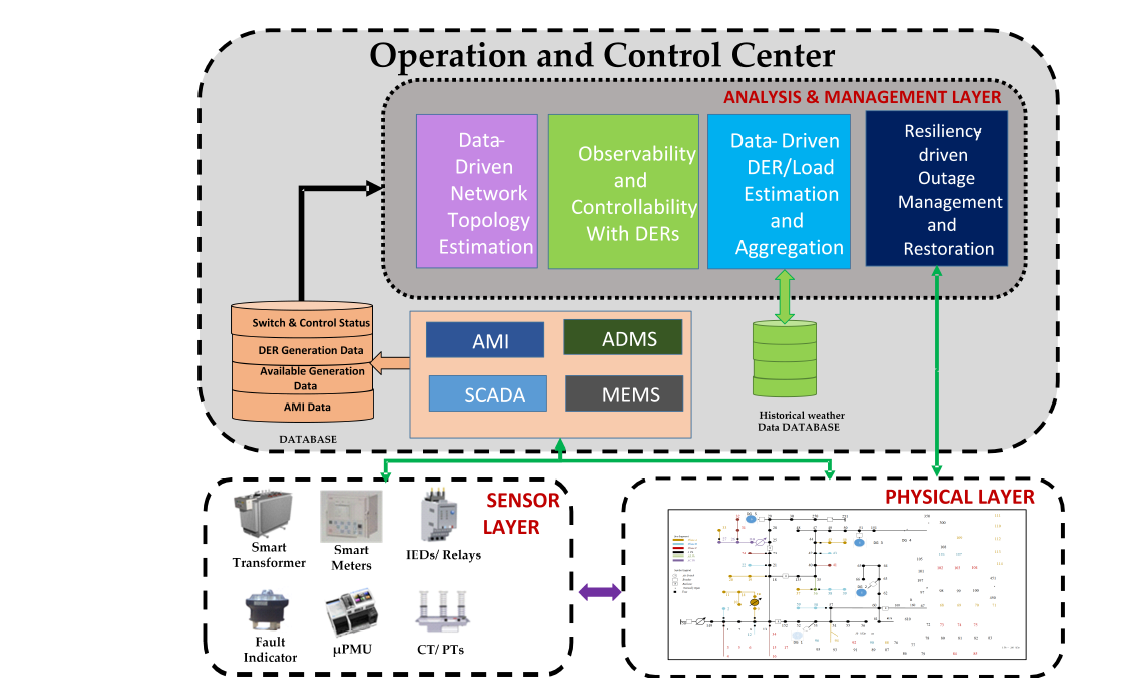
AGGREGATE: dAta-driven modelinG preservinG contRollable dEr for outaGe mAnagemenT and rEsiliency
This is a DOE funded project. Multiple institutions are involved in this project. The increasing penetration of distributed energy resources (DERs) have created new research opportunities and challenges:
- Accurate distribution system model for distribution system outage management and restoration
- Metrics to quantify observability and controllability of DERs enabled restoration of the distribution system
- Computationally efficient transmission and distribution co-simulation models for restoration of distribution system with multiple transmission feed.
- Optimal restoration architecture for utilization of active islanding and coordinated control of DERs
The overall architecture of the AGGREGATE software platform is presented below:

The objective of this project is to develop the algorithm to enhance distribution system resiliency by effectively controlling and utilizing DERs for outage management and restoration under hazard scenarios. To achieve the goal, team is exploring the research methods from the nonlinear control theory, graph-theoretic principles, resilient design method and power engineering. The outcome of the project will mitigate the DERs penetration concerns, and identify the values of DERs in improving and maintaining grid resiliency under contingencies including natural disasters and cyber-attacks.
Specifically, our group is developing the data-driven network topology estimation algorithm.
Data-driven network topology estimation:
Distribution system is equipped with tie switches and sectionalizing switches which facilitates in transition from one radial topology to another.
Knowledge of operational topology is important for state estimation, implementing optimal control strategy during normal operation and restoration during outage condition.
Our group have developed the data-driven topology estimation algorithm in which line flow measurements at few selected lines and historical/ pseudo load measurements are used to solve the mixed integer linear programming (MILP) problem to identify the most likely operational topology.
In this formulation, continuous variables are assumed to follow Gaussian distribution and discrete variables are assumed to follow Bernoulli distribution.
Our algorithm can identify the outage if smart meter ping measurements are provided.
The detailed mathematical description of the proposed algorithm can be found in the publications below.
On top of topology estimation algorithm, we have implemented topology visualization tool.
In this work, we have implemented the weighted least square branch current distribution system state estimator to get the knowledge of current operational situation of the distribution system. The figure below provides pictorial overview of our approach for distribution system topology and state estimation.

Topology reported by topology estimator may not be current operational topology. An evaluation framework is required to have a confidence on the estimated topology. A metric based on statistical inference technique to make a decision whether to accept or reject the estimated topology is under development.
Students working on the project:
- Anandini Bharadwaj
- Surendra Bajagain
Project Publications
Journal Articles:
place holder
Conference Articles:
place holder